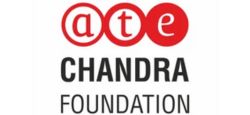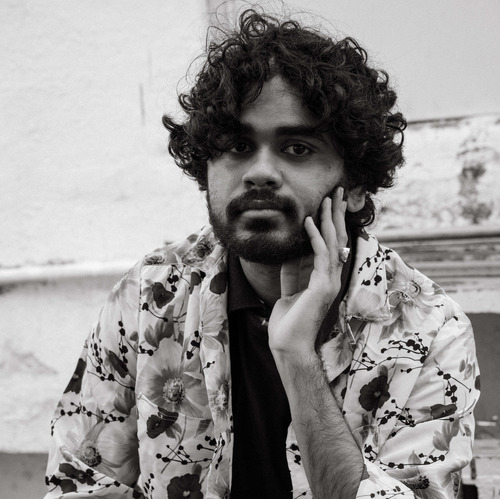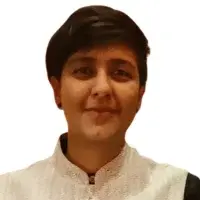How often have you heard about a nonprofit founder having to step back from core programme work to focus on fundraising, organisation building, or even just administrative tasks? Chances are, a lot. It’s a story we’ve all witnessed happen repeatedly. This is why, when we learned of a 20-person organisation choosing to invest in a range of capacity-building initiatives so that their founder could continue focusing on programme work, we wanted to know more.
Universe Simplified Foundation (USF) was established in 2017 and provides hands-on, inquiry-driven STEM (science, technology, engineering, and mathematics) education to students from highly under-resourced government schools. Today, this kind of education is only available to students from elite international or residential schools. What differentiates such inquiry-driven learning is that rather than using STEM kits to facilitate learning, it focuses on students independently designing and building projects with real-life applications.. This pedagogy inculcates critical thinking, creativity, and collaboration skills for problem-solving.
USF currently works with approximately 1,700 students enrolled in 19 schools in villages along the Kalyan-Murbad Road in Maharashtra. The organisation runs two programmes: Innovation Hub—in which students create projects using motors, solar panels, and other materials to address local challenges—and Technology Hub, in which students are introduced to coding and robotics.

Capacity building has always been critical to the organisation. “Any organisation with a strong focus on quality will inherently focus on capacity building,” says Henna Khan, USF’s founder and CEO. She adds, “In such cases, capacity building is not just a journey that the organisation embarks on; rather, it is embedded in the organisation’s value system. And that’s how it has been for us since the beginning.” Even during the organisation’s first three years, when the team comprised five or six members, there was a constant emphasis on capacity building.
Nevertheless, the team was in for a rude awakening when it scaled up directly from 350 to 1,500 students upon receiving greater funding after the pandemic. Given the size of the team and the focus on maintaining programme quality, they realised most of their resources were spent on execution, leaving little or no time and space for learning, upskilling, or capacity building. Henna reflects, “That was an eye opener for us. Looking back, I feel we should have scaled more gradually even though we had the funds. If you want to scale sustainably, you have to focus on capacity building first. So that’s when we made a conscious decision to focus on capacity building, and we spoke to our donors to inform them that we first wanted to equip ourselves to manage scale before growing even further.”

Stepping back to invest in yourself
The team strength grew to 15 as USF began to work with more students, which meant that Henna needed to develop her capabilities as a leader. “It’s a very different challenge to run an organisation comprising 15 members. So I spent a lot of time reading books about leadership and completed several online courses from Acumen Academy. In order to boost my fundraising skills, I also joined the ILSS Fundraising Programme. It helped me build networks and learn more about retail fundraising, which was instrumental in helping us raise funds that year.”
The need for a robust organisational culture also emerged as USF grew. “Culture-related issues are very easy to solve when you’re a five-member team. But such challenges take on a different shape when you have 15–20 members.” To build and embed a strong organisational culture, USF participated in Pravah’s Sanstha programme. Henna and another leadership member went on an eight-month capacity-building journey that involved support in implementing processes to build an organisational culture aligned with their values. After the workshop, USF adopted practices such as conducting regular one-on-ones with each team member, resolving conflicts through conversations, and documenting each employee’s roles and responsibilities. The team is now in the process of designing new KPIs for performance appraisal.
However, there was an unexpected and major turning point when USF’s co-founder, Meera Rathod, decided to leave the organisation to pursue higher education and work on other areas in education. In the one and a half years between the decision and Meera’s departure, the organisation had to nurture the team. Henna notes, “The stabilisation and capacity-building needs of the team became even more important during this time because Meera was the programme director. Until that point, she had been managing all the programme-related responsibilities—curriculum design, assessments, training, and reporting. We would thus need to build the team’s internal capacity to handle these roles.”

Another reason why capacity building was so critical to USF at this stage was because recruitment had always been a challenge for the organisation. “We are based in a village, so it is not very easy to hire for senior roles as people with significant experience are not willing to relocate. Instead of that approach, we have relied on building our team with youth from the villages we work in. As a result, we’ve had to build their capacities so that they can fulfil responsibilities they were previously not exposed to,” says Henna.
The organisation also did not have a second line of leadership at the time. This necessitated a conscious investment in developing mid-level leadership and continually training both new and existing recruits.
What changed
Henna had already decided to transition into more programmatic responsibilities to ensure quality on the ground in the wake of her co-founder’s departure. Therefore, the organisation needed to recruit and enable personnel to take on some of her non-programmatic responsibilities, such as fundraising and communications. A new manager with experience in communications was thus required, who would be incrementally trained to handle fundraising. Henna says, “The way we approach capacity building within the organisation is to first facilitate a knowledge transfer, then co-create documents, and then support the person to do the tasks themselves under supervision. This equips them to gradually perform the task independently.” After six months of capacity building, the new team member was able to autonomously handle fundraising and communications for the organisation.
Similarly, the programme team receives regular training, with mock facilitations being conducted to revise what they’ve learned. Feedback from observations made on the ground and during training is shared with the team at regular intervals, and they are also offered capacity-building workshops every Friday.
“There’s also a debrief session every 15 days,” says Henna. “It is a time for the team to come together and talk about what we’ve learned since the last session. Although these activities are time-consuming, they are essential for embedding capacity building as a culture; these are not just exercises we engage in from time to time.”
At USF, there’s now a focus on one-on-one conversations between the team and leadership to understand the capacities each team member is looking to build and how the organisation can best support them in this journey. Each team member and fellow is provided with an individualised capacity-building plan that identifies their needs and outlines concrete next steps to build those capacities. A quarterly review system is in place to monitor their progress along this plan.
What was learned
1. Flexible funding leads to investments in capacity building
Henna emphasises that all of USF’s capacity-building endeavours have been enabled by flexible grants. “Like-minded donors, such as the ATE Chandra Foundation and Rotary Club of Mumbai Queen’s Necklace, give us either completely or partially flexible grants. This has really helped us invest in non-programme costs, such as capacity building.”
Later, when SVP India came on as partners, Henna was able to speak to them about the need for hiring personnel to take over her non-programmatic duties. “To our delight, they told us, ‘Tell us what it is that no other donor will pay you for, and we will support that.’ While requesting funds to hire personnel for fundraising, communications, and operations is typically a very big ask for an organisation as small as ours, we were granted the funds to do so, and it helped me let go of certain functions. Without that grant, it would have been very difficult.”
Henna was also transparent with her donors about the organisation’s plan to build capacities rather than scale. “During our conversations, I said that it was okay if they would not give us a grant, but we needed to build and stabilise the organisation before we scaled. I thought that this would result in rejection, but many donors still funded us.”
2. Founders need to remain connected to programmes
Henna stresses on the value for a founder to be connected to the programmes their organisation delivers, and not be consumed with all the other responsibilities that they invariably are tasked with.
“I firmly believe that founders in the nonprofit sector are problem-solvers. So it’s cruel to remove them from being a part of the solution and tell them that their main role is merely to do what’s necessary to keep the organisation alive. My passion for how children learn is what led me to set up USF. And while I was involved in the curriculum design during the early days, my bandwidth for the programme side only diminished as my non-programmatic responsibilities grew. So, when Meera left, I felt like it was critical—not only for the organisation but also for me personally—that I take on more programmatic work. It helped sustain the passion with which I helped build this organisation.”
Henna’s transition to programme also had to do with ensuring that the quality of programmes was preserved. She adds, “You can’t just hire someone from outside and expect them to immediately run the programme with the same effectiveness.”
Advice for nonprofits
1. Saying ‘no’ to funders is important
Henna notes that nonprofits have to work with donors that they are aligned with. “This is important because unless that alignment exists, it can be hard to convince a funder of the importance of capacity building.”
This sometimes means saying no to funding from sources where there’s a disconnect. Henna explains, “We include capacity-building costs as a separate line item. In addition to a team member’s salary, we indicate what it will cost to build their capacities—through training, workshops, etc. We are very particular that no funder can only cover implementation costs. If you want to support a child, all of these costs are part of what it really takes. We’ve had to say no to funders who aren’t willing to view this in the same way that we do, and that’s okay.”
Taking the time to find the right donors and partners may result in slower scaling for the organisation. According to Henna, however, this can be beneficial. “Growing slowly works in our favour as it allows us to pilot and build the capacity of the team in direct proportion to scale. It ensures that when we do scale, there won’t be any drop in quality.”
2. Growth can take many shapes
The narrative around what growth looks like—or should look like—for a nonprofit can often be limiting. Henna says, “Scale is an important and integral part of every organisation’s strategy. Without growth, an organisation may stagnate. However, there are very few alternative dialogues happening today regarding how a nonprofit can grow. Our decision to not simply keep scaling directly has often been met with confusion. There’s this one narrative that if you have a successful programme that is bringing you funding, you ought to raise more funds and implement that programme everywhere.” She notes that while the quest for direct scale is an admirable endeavour, it may not be the best fit for everyone.
“It’s important for us to open up alternative dialogues that ask, ‘What will happen if you remain small and scale your idea or pedagogy instead of the programme directly?’ Currently, organisations find it easier to raise funds for direct implementation but struggle to secure funding for research to change public policy. There’s so much apprehension around potentially losing funding if you choose to not scale directly that nonprofits often don’t have honest conversations with their donors about this. But the truth is that donors are often quite receptive to this. It is our fear that forces us to shy away from these conversations.”
3. Capacity building takes time
Capacity building requires more than just monetary investment; it requires leadership to invest their time into it as well. “Building an organisation where decision-making power is distributed and people are allowed to make mistakes is time-consuming. You can’t just send your team for a workshop and think that you’re focusing on capacity building. It needs to be embedded into your culture, which naturally takes significant time and effort,” says Henna.
One way in which the organisation fosters the capacity-building-as-culture approach is by engaging in collaborative decision-making to develop new leaders. Henna explains what this looks like in practice: “Recently, we were discussing what the organisational structure should look like next year since the teams are growing and we need to start scaling. There were two ways we could have gone about this. The faster option would’ve been for me to dictate the structure I had in my mind. Instead, each person was asked to come up with three options for what USF could look like. From the options we received, a few were shortlisted. Ultimately, we collectively identified one of the shortlisted options as the one we would go ahead with.”
Advice for funders
1. Founders needn’t be the primary fundraisers
Founders are naturally involved across various functions within the organisation, but this doesn’t mean that they have to be the chief executor of each of these functions. “Of course it’s important for founders to be involved in fundraising, but the standard course of action tends to be hiring programme managers. Why can’t we hire fundraising managers and compliance managers instead?”
Henna believes that donors can do more to change the narrative. If high networth individuals (HNIs) and foundation heads agree to engage with fundraising managers instead of the founder, it will create a ripple effect in the sector. In addition, donors can offer support oriented towards improving their nonprofit partners’ fundraising functions—such as hiring new resources and building capacities to delegate fundraising responsibilities.
2. Non-programme costs are critical
In the nonprofit sector, non-programme costs are expected to constitute a small fraction of an organisation’s budget. Henna believes that the sector can look to the for-profit sector to get a better sense of how integral non-programme activities can be. “What percentage of funds does a for-profit spend on their non-programme activities such as advertising? It’s substantial, isn’t it? So why aren’t nonprofits given enough funds to strengthen the organisation or build their fundraising capabilities?”
She notes that in many nonprofits, a single leader or team member is often tasked with work that should be distributed among three to four people. “I remember that for the first three years, I handled every non-programme role in the organisation. And although we were a smaller organisation, performing the duties of five people is not easy.” Henna believes that funders should ask about their nonprofit partners’ non-programme needs and work towards supporting them in those areas.
What’s next?
Henna hopes that the discourse in the nonprofit space gradually shifts from getting a programme to as many people as possible to providing the necessary support to ensure that programmes are as robust as possible. To her, embedding capacity building as a critical cultural pillar is what makes an organisation strong. In keeping with the philosophy of deepening impact and building capacities before scaling, the organisation aims to contribute to the Indian STEM space rather than focusing on direct implementation.
Henna says, “We intend to vertically deepen our programme. Currently, it is for grades 6–9, but we are already working with grade 5 students in a few schools to gauge how they learn. In five to 10 years, we see ourselves showcasing our model schools in a way that helps influence public policy and hope to work with educators to embed inquiry-driven pedagogy across the nation.”
—
About Henna Khan
Henna Khan is the CEO and co-founder of Universe Simplified Foundation. An engineer with an MBA, she is passionate about transforming traditional approaches to education in schools.
—
Know more
- Read this report on capacity building in nonprofits.
- Read this case study to learn why nonprofits need to invest in people and culture.






